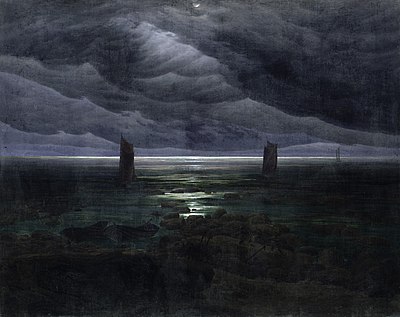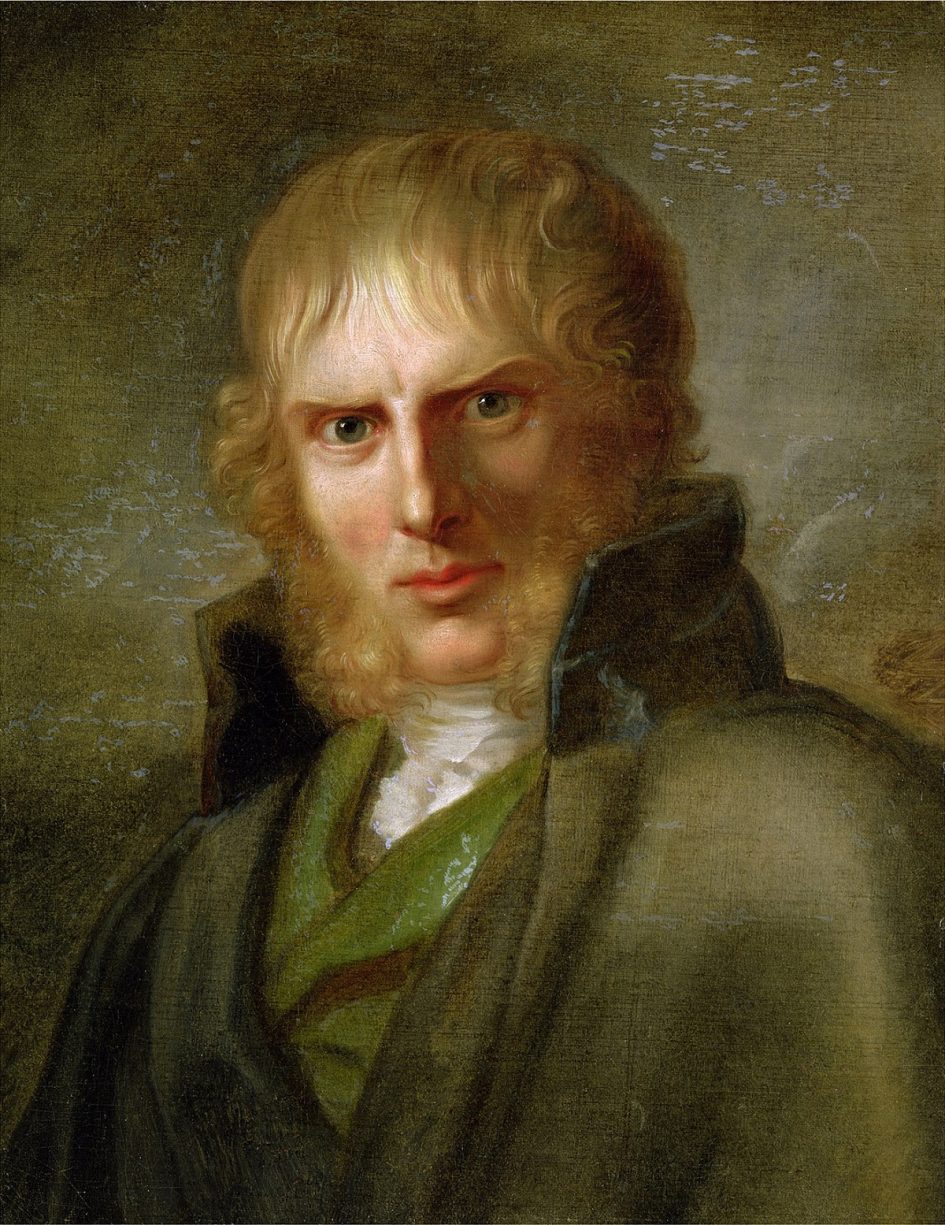Caspar Who? Caspar David Friedrich
A German Romantic landscape painter from the 19th century. An important figure in German art history at the time. Friedrich was known for his paintings that contain silhouette figures placed in scenes at the night sky, morning mist, desolate trees or a Goth-like setting. His style of painting was representative and had meaning behind the artworks.

What were the meanings behind his work?
David d’Angers named Caspar Friedrich as the man who had created “the tragedy of landscape.” Part of his work involves grief and sorrow with gloomy settings to imbrace our inner thoughts. He also brought a new way of art to connect the world to heaven. He showed this by minimizing people to show the grandness of God and his creation of the earth.

Topsy Turvey?
In that era, landscape painting was bright, sunny and happy. Friedrich turned is upside down as he painted what people thought were damp and uninteresting artworks. He used the crucifixion instead of bright angels that demonstrated tragedy and death. Friedrich was not a successful artist at this time, but after his death, his work was admired by many. It invoked the less spoken emotions of solitude and despair.

Thoughts?
I really like Friedrich’s work as I can feel intensity of the paintings, a relation to my own struggles and emotional hardship. It tells a person that it is okay to feel this way. When in a sad mindset, the thing you would least want to see is a bright and cheerful painting. This helps sit with emotion, to understand it and help move on from it
References
https://en.wikipedia.org/wiki/Caspar_David_Friedrich#Legacy
https://www.youtube.com/watch?v=go87azXN5Ms
https://www.britannica.com/biography/Caspar-David-Friedrich

Leave a Reply
You must be logged in to post a comment.